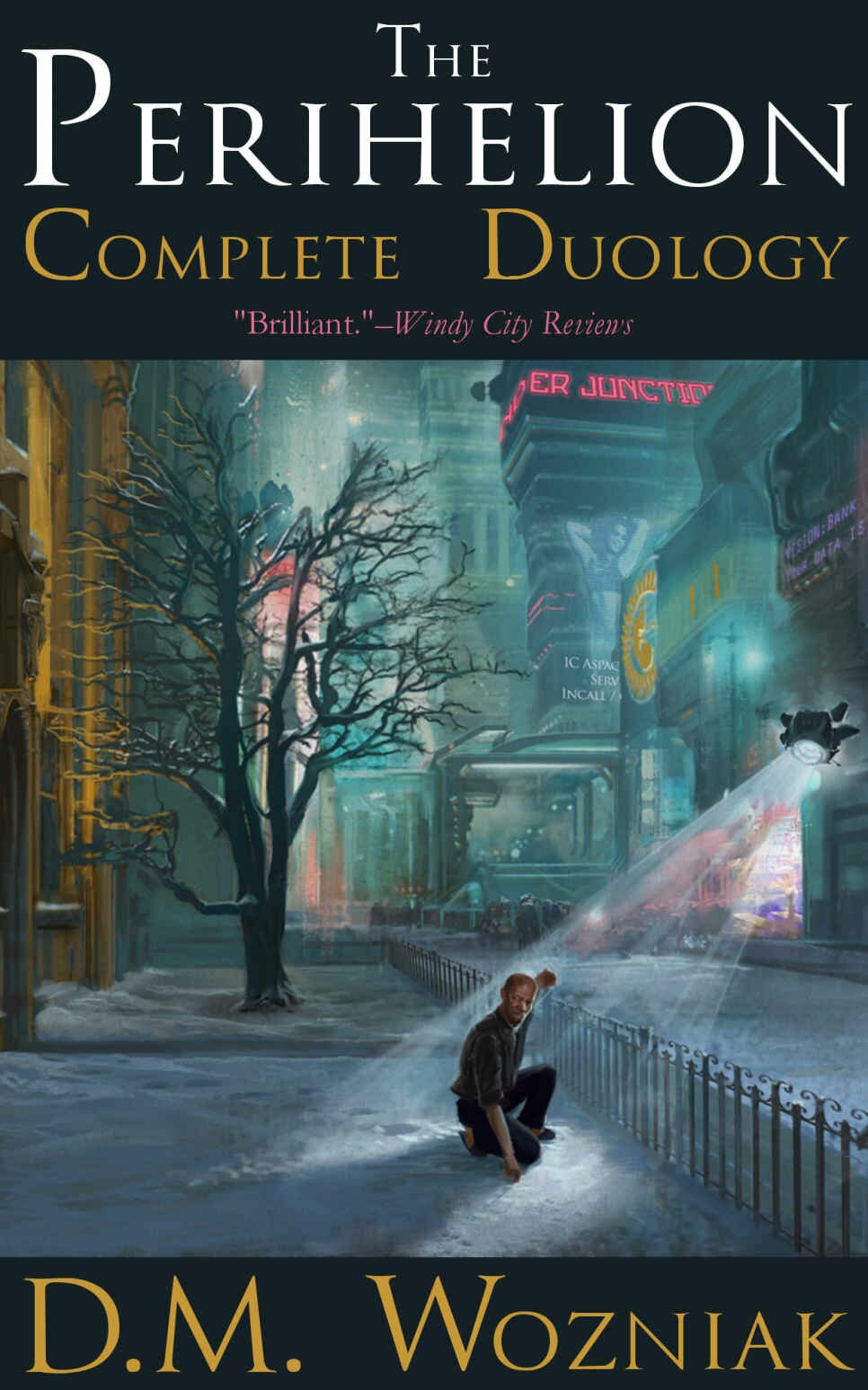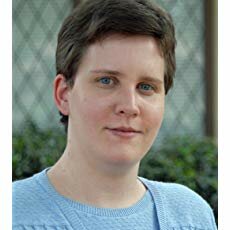I read and reviewed D.M. Wozniak’s science fiction duology The Perihelion Complete Duology several years ago. It may yet prove to be prescient. I had the opportunity to interview him after the contested 2020 Presidential election.
Tamara Wilhite: In that duology, a post-Civil War 2 American has split between the Redlands and the Bluecore cities. This is arguably more practical than trying to have entire states secede from the United States, because it doesn’t force millions of people to be relocated in order to get ideologically consistent populations. Can you tell the audience more about these novels?
D.M. Wozniak: It all started with my desire to write a modern, literary fiction “disaster” novel with a sci-fi edge. I loved the idea of building a story around a macro-level disaster (an EMP taking down an entire city), but making it character-driven instead of plot-driven. I did this by creating a cast of six protagonists, each of whom were going through a personal disaster that uniquely echoed the macro disaster.
The symbolic correlation between earth’s perihelion and an EMP came to me one day, and then the theme of the novel sort of fell into place. The perihelion is the moment that the earth is closest to the sun (usually in early January). This is counter-intuitive for us in the northern hemisphere, because it is set during winter. The axial tilt of the planet causes seasons, not our proximity to the sun. This “turning away” from all that is good—our better selves, our ideal state—is exemplified in our over-reliance of technology over humanity. So the novel is really one of redemption. Of rediscovering what really nurtures us. Or rediscovering what it means to have power—the freedom to better ourselves and others.
As for the writing style, I was highly influenced by The Poisonwood Bible, by Barbara Kingsolver—specifically, her use of first person for all her protagonists, and cycling through them in a consistent manner. This choice allows the reader to fully immerse themselves into the internal conflict of each of the characters.
Tamara Wilhite: The de facto secession or rejection of federal policies conservatives don’t like could be implemented via Sanctuary policies. A few pro-life and Second Amendment sanctuaries already exist, and they are based on the precedence established by liberals’ Sanctuaries for illegal aliens. What do you think of that trend? And could it lead to a scenario like the divided blue core cities and Redlands minus a civil war?
D.M. Wozniak: As you point out, sanctuary policies are political tools utilized by both the right and left to claim immunity from federal laws they think violate the constitution. It is no secret that the denser the population, the more liberal those geographic areas tend to become. This is why major cities use sanctuary policies for typically liberal causes (e.g. immigration reform), while smaller, rural towns employ the same tool for typically conservative causes (e.g. pro-life, gun rights).
No matter what one’s political affiliation is, I am sure they can agree that as a country, we are trending in an unhealthy direction of polarization; increased use of sanctuary policies is an indicator of this. There are many potential causes, which I won’t get into right now (although I highly recommend the Netflix documentary The Social Dilemma), but what is fascinating is how geography plays into this polarization, much like it did during the Civil War.
The bloodshed of the Civil War was necessary to end the brutal and unjust practice of slavery, an evil which the southern states had relied upon for decades due to their geographic placement (i.e. agricultural-based instead of industrial-based economy). If there would ever be a looming second civil war, I believe that geography would again play into the lines which would certainly have to be drawn. Except, instead of North and the South, you would have dense population zones and rural areas, as these are where the constitutional philosophies now differ. In other words, the Bluecores and the Redlands.
Tamara Wilhite: The Perihelion is science fiction, but you write fantasy, as well. Can you tell me about your Age of Axion books?
D.M. Wozniak: Age of Axion is a new series; Book one is titled The Indivisible and the Void. It certainly reads like fantasy, but it has a science fiction heart. Which is sort of why I prefer the term “Speculative Fiction”.
My desire to write this series was built out of a personal reaction to the modern genre market. In the past decade, there seems to have been a proliferation of Young Wizard Heroes (think: Harry Potter, Kvothe from Name of the Wind, etc.), and little to no middle-aged protagonists whose problems and issues I find more relatable. Note, I am not disparaging those said works; in fact, I adore them. I simply wanted to write something more “adult” and approach complex themes such as faith vs. reason, and the abuse of power. What I ended up creating was the story of a man whose entire world falls apart. It’s a novel of disillusionment. Of tearing everything down in order to build something back up.
Tamara Wilhite: And what is The Gardener of Nahi about?
D.M. Wozniak: The Gardener of Nahi is my first novel—a film-noir time paradox work. I employ two interwoven storylines that center around a star-crossed couple. There are two worlds: the dystopian hierarchical society of Cassidian, and the more classical world of Nahi. As the novel progresses, the two storylines converge as the relationship between those two worlds are revealed.
Looking back on it now, it reminds me of Memento meets Blade Runner. But it is oddly prescient as well, due to the novel’s themes of immigration and population control.
Tamara Wilhite: Your bio says that you’re a software architect by trade. How has that influenced your work? And what else has influenced your writing?
D.M. Wozniak: I would like to say that software architecture has influenced me, but in truth, it hasn’t greatly. It’s not like I wrote the next great Snow Crash, or anything like that. Being a technologist sometimes helps with my writing, but more often than not, I don’t care about the “tech”. I care more about the characters. I want the “science” in my science fiction to be plausible and consistent, and I sometimes perform research in order to ensure this, but I don’t want these details to attract too much attention. It’s the Gold in my Pulp Fiction suitcase.
Tamara Wilhite: What are you currently working on now?
D.M. Wozniak: I’m a little more that 50% done with book two of Age of Axion! It’s titled Temberlain’s Ashes, and it will be out next year. I am very excited to release it. Book one ended on somewhat of a climax. Here is the blurb:
In the ruins of the Celestium, secrets were revealed. Chimeline was changed. And a dark promise was made: They’re coming.
As Democryos struggles with the horrifying truth behind the power of voidance, the veiled man’s prophetic words come true. A new evil from beyond their world has been awakened, forcing Dem and his companions to flee south to Xiland. Everything that they hold dear will be put to the test: friendships and loves.
The war with the veiled man may be over, but the real one has just begun.
Tamara Wilhite: Is there anything you’d like to add?
D.M. Wozniak: I appreciate you raising awareness of independent authors such as myself. I welcome anyone to go to www.dmwozniak.com and sign up for my mailing list. I send out emails every two weeks, where I share progress and insights into my latest work, as well as links to other free and discounted speculative fiction books.
Tamara Wilhite: Thank you for speaking with me.



Comments